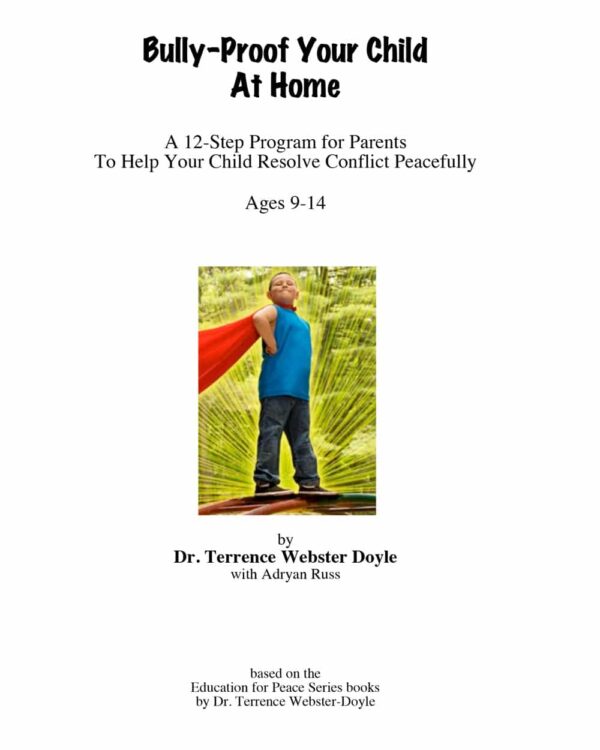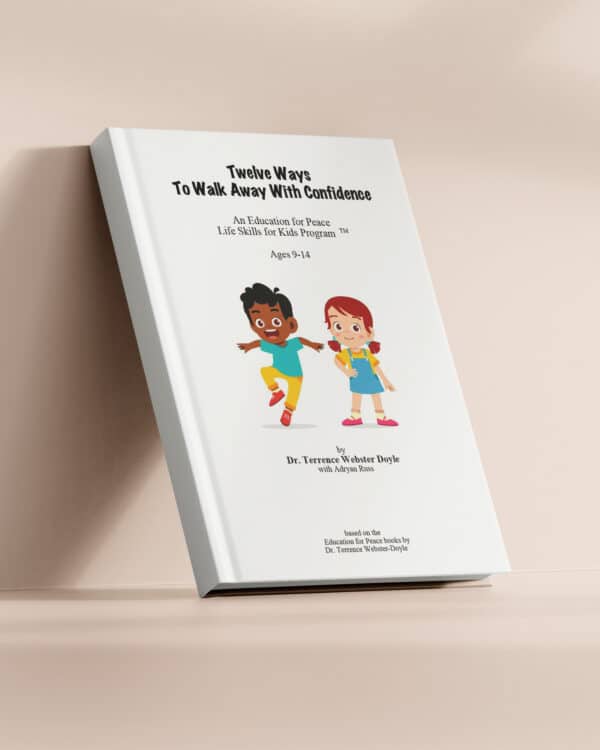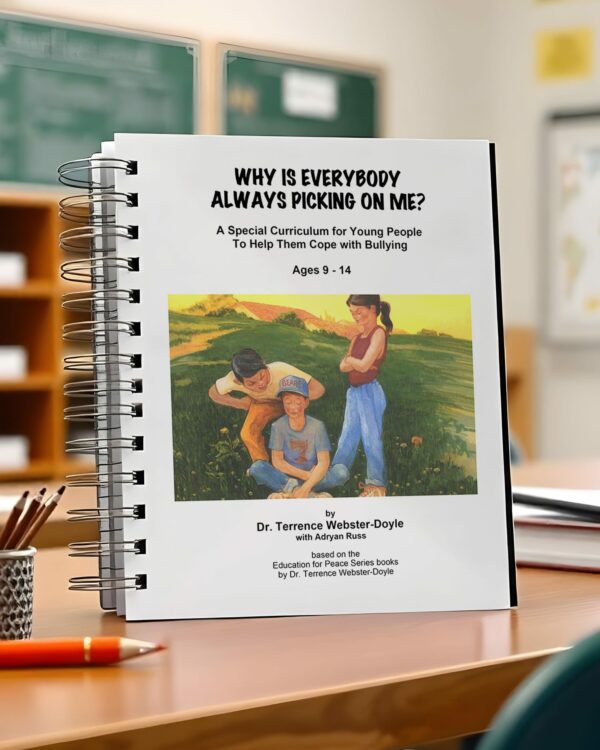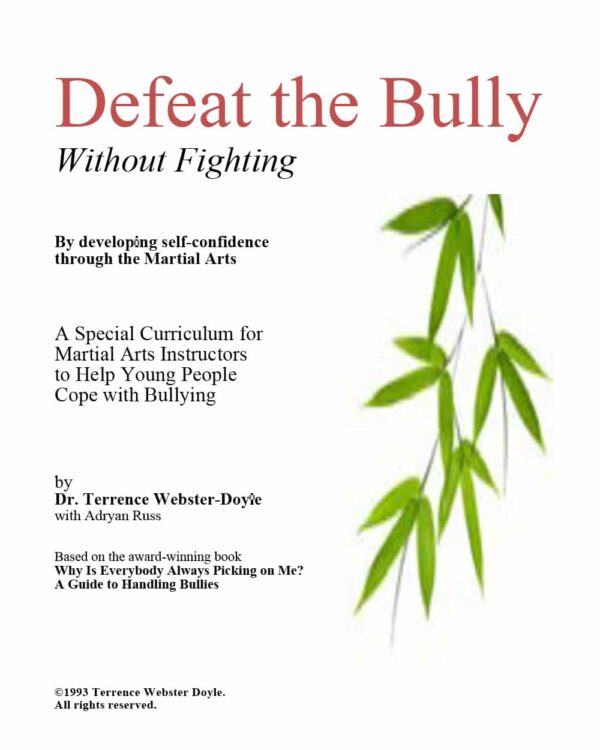Why Bullying Is the Most Urgent Issue Children Face Today
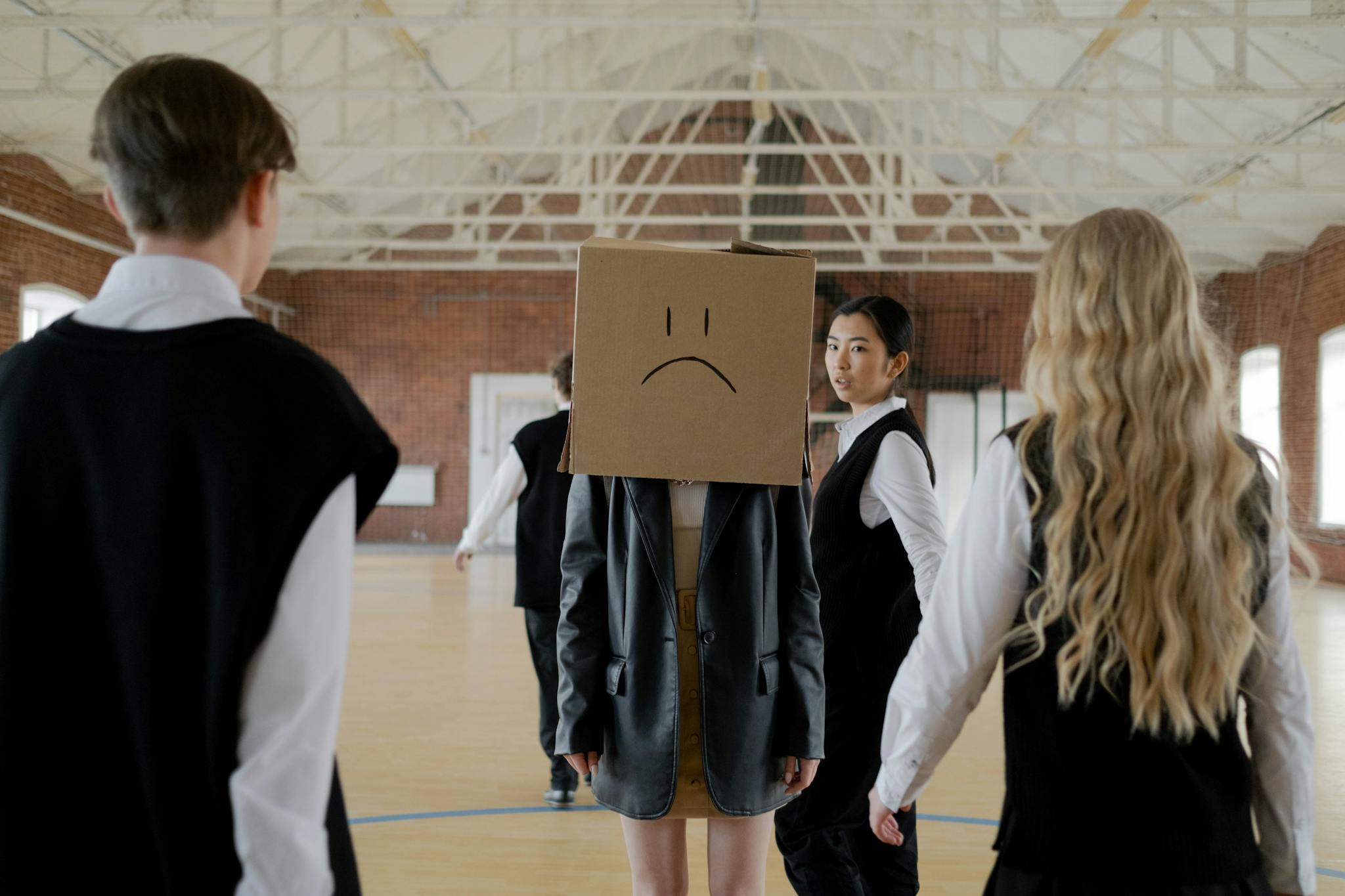
Dr. Terrence Webster-Doyle, who was a leading expert in bullying prevention, has often said that bullying is the most urgent issue children face today. At first glance, it might seem like a typical part of growing up, something kids will eventually grow out of, but the reality is far more complex and we need to take it seriously.
Bullying shapes how young people understand power and conflict, and influences not only their daily experiences but also the kind of society they’ll help create as adults. If we don’t learn healthy ways to work with others early in life, we risk growing into adults who don’t know how to do it either and that can have serious, far-reaching consequences.
It’s important to remember that bullying is more than the occasional mean comment or playground scuffle. It’s a repeated pattern of harm that, when left unaddressed, can affect every part of a child’s life by undermining their sense of safety and self-worth.
Through these experiences, children learn lasting lessons about power: how it’s used and how to respond to it. Both those who bully and those who are bullied carry these lessons forward and it shapes how they handle conflict for years to come. In some cases, this can feed cycles of aggression and mistrust that extend far beyond the classroom.
Seeing bullying as an early form of conflict helps us understand why prevention matters; not just for the children experiencing it today, but for the health and stability of our communities and the wider world tomorrow.
Bullying as the Root of Larger Social Conflicts
Beyond the immediate harm to a child, bullying reflects patterns of power and control that can echo far into adulthood. Experiencing or witnessing it shapes how a person approaches conflict and forms relationships for the rest of their life. For those who bully, it can teach them that intimidation is a way to control situations, which may become a behavior that continues unchecked if it’s never addressed.
In many ways, bullying is a smaller-scale version of the same power struggles that fuel wars, discrimination, and systemic injustice. Without learning peaceful, constructive ways to handle conflict, young people are far more likely to carry these patterns into adulthood, where the stakes, and the damage, are much greater.
That’s why addressing bullying isn’t just about helping individual children; it’s about interrupting the roots of conflict itself. When we can break these cycles of aggression early, we’re not only creating safer schools, we’re also contributing to a more peaceful and just world.
Anti-Bullying Resources
Why We Need to Act Now
At its core, bullying is about an imbalance of power. History shows that many large-scale conflicts and wars grow out of unresolved tensions between groups and are fueled by prejudice, fear, and the struggle for control. These aren’t new dynamics, they’ve been part of human conflict for centuries, but they often begin in the smallest of settings.
In childhood, that same pattern plays out on a smaller scale. A student might use physical strength, social status, or influence to dominate or exclude others. Those on the receiving end may withdraw and internalize the hurt or respond with their own aggression.
Over time, these roles can become ingrained and without guidance to resolve conflict in healthier ways, the same instincts and behaviors can resurface in adulthood in workplaces, communities, and even in positions of leadership where the stakes are much higher.
When we look at bullying through this lens, it’s not just a “school problem.” It’s an early training ground for how people handle power, difference, and disagreement which are the very forces that shape peace or conflict on a global scale.
Fear’s Role in Driving Aggression and Mistrust
Bullying teaches early lessons about “us versus them” where people are divided into groups based on differences rather than understanding. This mindset creates barriers between communities and can lead to mistrust and hostility.
Over time, fear of “others” can grow into prejudice, which is the judgment or exclusion of people simply because they “don’t fit in”. These patterns extend beyond childhood and can fuel social tensions that manifest as discrimination, exclusion, or even violence on a larger scale.
Fear plays a powerful role in this cycle. When it isn’t recognized or managed, it drives defensive behaviors and suspicion toward anyone who appears different. Bullying prevention programs that focus on emotional regulation and self-awareness give children the tools to manage fear before it turns to aggression, which lowers the risk of conflicts escalating.
Addressing this cycle early through bullying prevention encourages acceptance and empathy. We can guide children to connect with others and overcome differences rather than deepen them.
What Can You Do?
Preventing bullying and the far-reaching harm it can cause is a responsibility we all share.
Whether you’re a parent, teacher, counselor, or community member, you have the power to help children build the skills and values they need to grow into compassionate, confident adults. It starts with everyday choices, small conversations, and consistent reinforcement of respect and empathy.
The approaches below offer practical, realistic ways to begin creating more inclusive environments you can start using today.
Build Inclusive Communities from Childhood
Creating inclusive communities starts with teaching children to appreciate and embrace diversity from an early age. When kids learn to value differences, whether in culture, abilities, backgrounds, or perspectives, they begin to see others as individuals rather than as “outsiders” or threats.
This kind of early education breaks down the “us versus them” mindset where bullying so often takes root. Encouraging acceptance means guiding children to be genuinely curious about what makes each person unique and to treat those differences with respect.
When children feel accepted themselves, they’re less likely to feel isolated which is a major factor in both bullying and being bullied. Kids who grow up with this mindset often become adults who help build communities based on cooperation and kindness. These communities tend to be stronger and more peaceful because people know how to approach differences with understanding instead of fear or suspicion.
By teaching inclusion from the very beginning, we can lay the groundwork for a society that values connection and shared humanity over division.
Helping Kids Solve Conflicts Peacefully
Teaching children to handle conflicts calmly and thoughtfully gives them skills they’ll use for a lifetime. Learning how to communicate clearly and listen with intent helps them express their feelings without aggression and better understand other perspectives. These problem-solving abilities ease frustration and make it easier to reach fair solutions.
When kids practice resolving disagreements peacefully, small issues are less likely to grow into bigger problems. And these skills don’t stop at the classroom door, they carry well into adulthood and help people navigate challenges in workplaces, families, and communities.
On a larger scale, peaceful conflict resolution is just as important for societies. The same skills that prevent arguments between two people can help reduce tensions between groups and even nations.
Empathy as a Key to Overcoming Prejudice and Preventing Conflict
Empathy helps children look past labels and stereotypes to see others as real people with unique experiences and feelings. When kids learn to understand and share the emotions of others, they naturally grow more compassionate and open-minded.
This ability to see the humanity in others is critical for preventing larger conflicts. Many global disputes have roots in fear and prejudice between groups that fail to recognize each other’s worth. Empathy breaks down those barriers by building respect and cooperation across differences.
Developing empathy early gives children the foundation for peaceful relationships that reach beyond friends and neighbors to include diverse communities and cultures. Teaching empathy today helps shape adults who are more likely to choose dialogue and compromise over hostility and violence.
By nurturing empathy, we can take a meaningful step toward reducing the fear and division that too often lead to social unrest and even war.
Breaking Cycles of Trauma Through Early Intervention
Bullying can leave deep emotional scars on both those who are targeted and those who engage in it. Without timely support, these wounds can harden into lasting trauma that fuels ongoing cycles of pain and aggression. This cycle can ripple through families and communities, passing from one generation to the next and make it harder for societies to heal and move forward.
When trauma is left unaddressed, it doesn’t stay contained. It can grow into broader patterns of conflict and violence. On a larger scale, unresolved trauma within individuals or groups can deepen mistrust and hostility between communities and nations. Many of the world’s long-standing conflicts have roots in histories of pain that were never fully acknowledged or healed.
That’s why early intervention matters. Supporting children as they process and recover from bullying helps stop trauma-driven aggression before it becomes entrenched. It gives them healthier ways to handle emotions and resolve disputes, which are skills they’ll carry into every part of life.
The Importance of Adult Role Models
Adults play an important role in shaping how children learn to treat others. When parents, teachers, and community leaders consistently model respectful communication and kindness, they give children powerful examples to follow. Through their actions, these role models show how to build trust and handle challenges without resorting to fear or aggression.
Children learn far more from what adults do than from what they say. When kids see positive behavior modeled, it creates a safe environment where they feel valued and understood, which makes it easier for them to form healthy relationships. On the other hand, when adults engage in or ignore aggressive or unfair behavior, it can reinforce harmful patterns and leave children uncertain about how to handle conflict.
By embodying the qualities we hope to see in the next generation, adults help children grow into compassionate individuals who are equipped to build peaceful, respectful communities.
A Community-Wide Commitment to Bullying Prevention
The most successful bully prevention requires the effort of an entire community. Schools cannot take on this challenge alone. Families, neighborhoods, and community organizations all have an important role in creating spaces where respect and safety are the norm.
When everyone shares responsibility and supports one another, children grow up in environments that teach the value of peace and inclusion. This united approach helps stop fear and prejudice before they can take root, which ultimately buildsg a stronger, more connected community.
Taking Action Together for a Safer Future
Bullying is far more than a childhood challenge. It shapes how young people understand power, handle conflict, and connect with others, and when left unaddressed, it not only harms individual children but can also fuel cycles of aggression and division that ripple through communities and even across nations.
The danger grows when those children become adults and, eventually, leaders, without ever learning healthy ways to manage emotions or resolve disagreements. Without these skills, conflicts between people can escalate into disputes between nations, sometimes even leading to war.
The good news is, we can change that path. When parents, teachers, counselors, and communities work together, we can give children the tools they need to build relationships that are rooted in respect and inclusion.
With early intervention and steady support, we can break the cycle of bullying and move toward a future where kindness guides how we treat one another. The time to act is now! One child, one classroom, and one community at a time.
